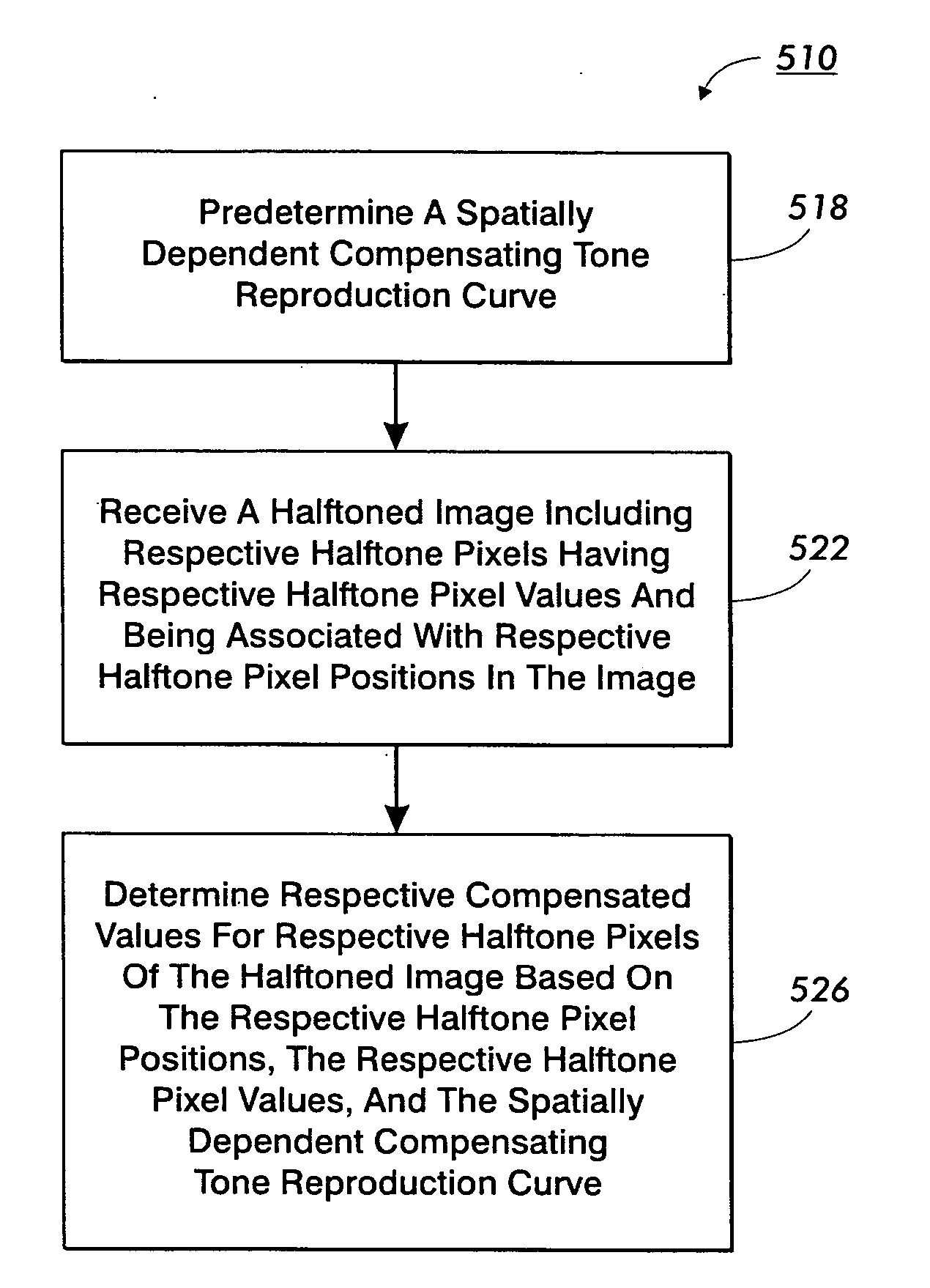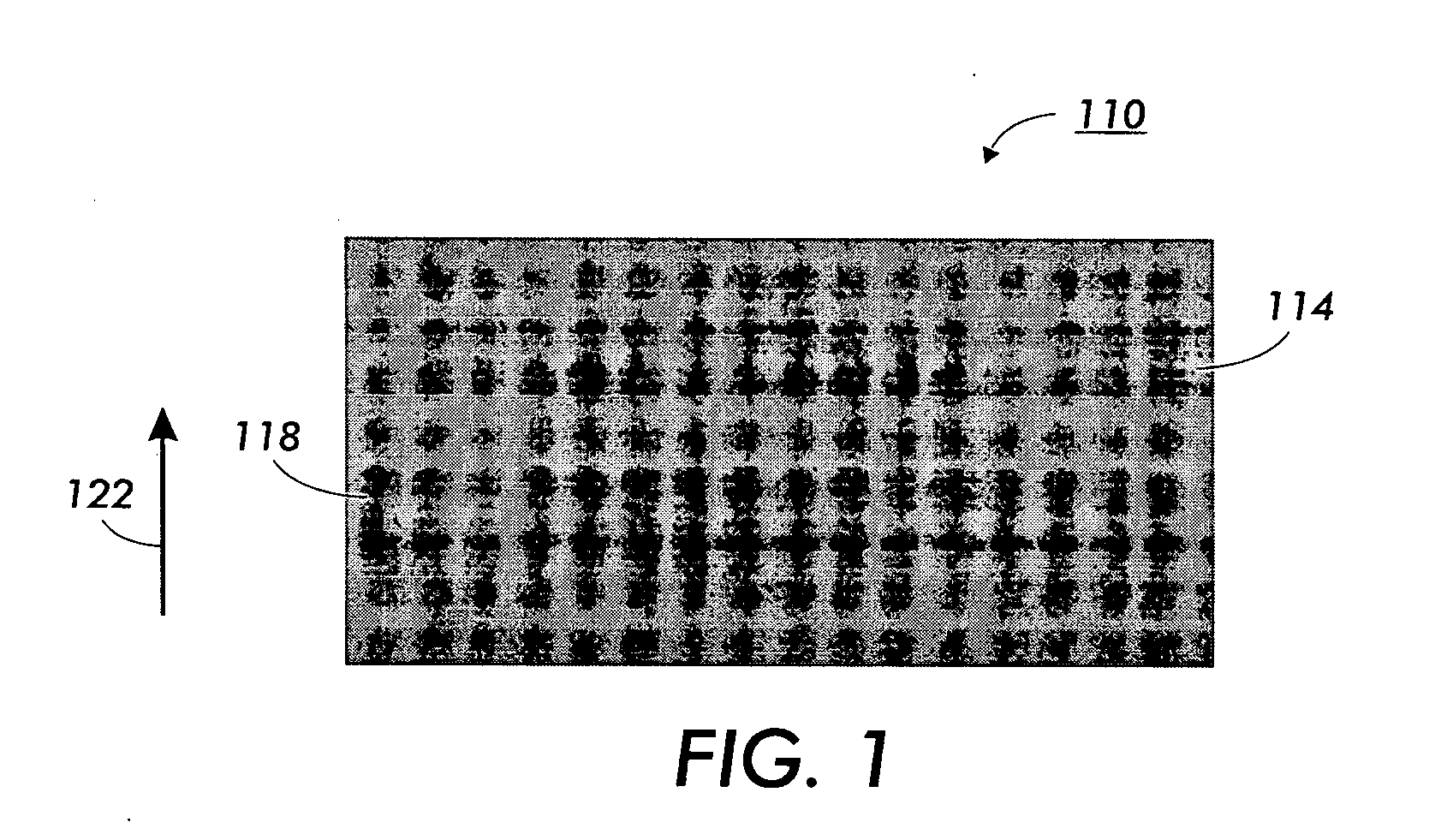Uniformity compensation in halftoned images
a technology of uniformity compensation and halftones, applied in the field of uniformity compensation of halftones, can solve the problems of image non-uniformities, imaging artifacts in rendered output images, and system components manufactured to higher or more stringent tolerances can be expensive to design and produ
- Summary
- Abstract
- Description
- Claims
- Application Information
AI Technical Summary
Problems solved by technology
Method used
Image
Examples
first embodiment
[0064] In a first embodiment, if the error is positive, then the error is transferred to the highest valued neighboring pixel that has not yet received an error distribution. The error is transferred up to a maximum value. For example, in a system where an 8-bit value is used to represent gray levels ranging from 0 to 255, 255 may be a maximum value allowed for a pixel. In such a system, where a calculated error is, for example, 100 and the first ranked pixel, or pixel with the highest value, has a pixel value of 220, 35 counts of the calculated error value are transferred to the first ranked pixel. At the end of the operation, the calculated error value is lowered to 65 and the pixel value of the first ranked pixel is raised to the maximum of 255. If, as in the example above, error remains to be diffused or distributed, processing proceeds to an eligible pixel check. In the eligible pixel check, a determination is made as to whether there are additional neighboring pixels available...
fifth embodiment
[0072] Clearly, aspects of these various versions of Rank Ordered Error Diffusion can be combined to create additional versions. For example, the spatial weighting of the fifth embodiment may be combined with the discarding of excess error of the fourth version to create yet another version.
[0073] The method 510 for compensating for a spatial non-uniformity in an image rendering device is applicable where it is appropriate to provide compensation based solely on pixel position. For example, the method 510 is appropriately applied where spatial non-uniformity is not a strong function of pixel value. Additionally, the method 510 is appropriately applied where some compensation is desired, but where the expense of more complete compensation is not warranted. However, some applications may call for additional compensation accuracy.
[0074] Referring to FIG. 6, a second method 610 for compensating for a spatial non-uniformity in an image rendering device includes predetermining 612 a spat...
PUM
 Login to View More
Login to View More Abstract
Description
Claims
Application Information
 Login to View More
Login to View More - R&D
- Intellectual Property
- Life Sciences
- Materials
- Tech Scout
- Unparalleled Data Quality
- Higher Quality Content
- 60% Fewer Hallucinations
Browse by: Latest US Patents, China's latest patents, Technical Efficacy Thesaurus, Application Domain, Technology Topic, Popular Technical Reports.
© 2025 PatSnap. All rights reserved.Legal|Privacy policy|Modern Slavery Act Transparency Statement|Sitemap|About US| Contact US: help@patsnap.com



